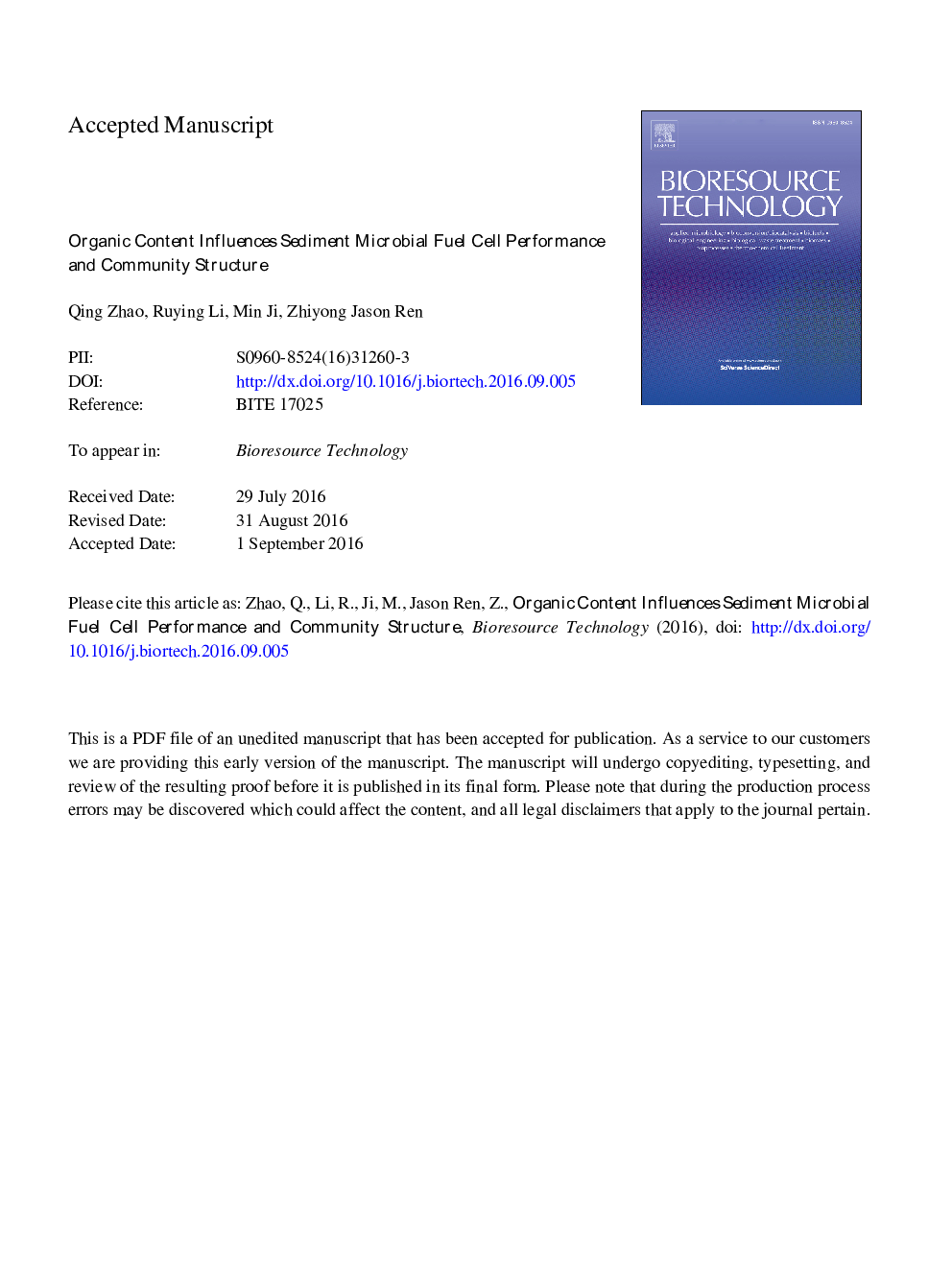| Article ID | Journal | Published Year | Pages | File Type |
|---|---|---|---|---|
| 7069753 | Bioresource Technology | 2016 | 35 Pages |
Abstract
This study constructed sediment microbial fuel cells (SMFCs) with different organic loadings without the amendment of external substrates, and it investigated how such variation affects electricity generation and microbial community structure. Results found sediment characteristics significantly influenced SMFC performance and appropriate organic content is important to maintain stable power outputs. SMFCs with loss of ignition (LOI) of 5% showed the most reliable performance in this study, while high organic content (LOI 10-16%) led to higher but very unstable voltage output because of biogas accumulation and worm activities. SMFCs with low organic content (1-3%) showed low power output. Different bacterial communities were found in SMFCs shown various power generation performance even those with similar organic contents. Thermodesulfovibrionaceae was found closely related to the system startup and Desulfobulbaceae showed great abundance in SMFCs with high power production.
Keywords
Related Topics
Physical Sciences and Engineering
Chemical Engineering
Process Chemistry and Technology
Authors
Qing Zhao, Ruying Li, Min Ji, Zhiyong Jason Ren,
